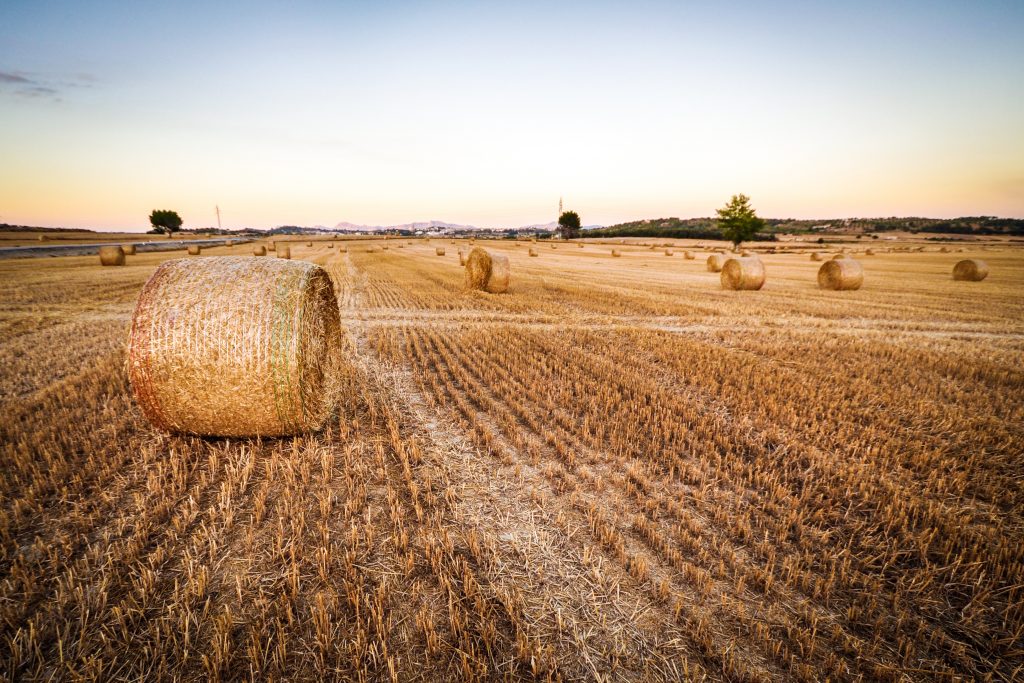Quality horse hay should be free of mold, dust, and noxious weeds. The earlier a hay is harvested (within the life cycle of the grass), the more nutrients will be available for your horse. Late-harvested hays can be coarse and thick, as well as lower in nutrients and palatability than hays harvested in early to mid-bloom.

Legume vs. Grass Hays
There are two general types of hay: legume and grass. Legume hays are higher in protein, calcium, Vitamin A, and digestible energy than grass hays. While growing horses, pregnant/lactating mares, and equine athletes may need a higher energy source such as that provided by legume hays, many horses do not.
While lower in protein and energy, grass hays tend to be higher in fiber than legume hays and can sufficiently meet the majority of nutrient needs of most horses. Grass hays can be further divided into cool and warm season grasses (depending on where they thrive), with cool season grasses typically being a little higher in sugar and energy content (and palatability) than warm season grasses.
Legume Hays:
- Alfalfa: Containing around 15-20% crude protein, alfalfa is one of the highest protein hays, and it’s also highly palatable. However, due its high protein and calcium content, it is recommended that alfalfa not be fed as a horse’s sole forage ration.
- Clover: Highly palatable with a protein content between 13-16%, clover hay comes in several varieties, but red clover is the most popular. Horse owners should be aware that clover can be affected by a mold that causes horses to salivate excessively, giving them the “slobbers”.
Warm Season Grass Hays:
- Coastal Bermudagrass: With a protein content ranging from 6-11%, bermudagrass hay is highly digestible. However late-harvested bermudagrass has been associated with ileal impaction colic, so use caution when purchasing or feeding this type of hay.
- Bromegrass: Best when harvested at mid-bloom stage, bromegrass is highly palatable and has a nutrient content similar to bermudagrass.
- Prairiegrass: A mixture of native grasses grown in the Midwestern U.S., prairiegrass hay has a protein content typically between 6-8%. It is known to be fairly low in nutrients, but the quality can vary depending on the grass species in the hay.
Cool Season Grass Hays
- Orchardgrass: Ranging from 7-11% crude protein, orchardgrass is a fairly good hay for horses if cut in the early bloom stages.
- Timothy: A popular and highly digestible grass hay, Timothy is known to be low in protein (7-11%), but high in fiber.
Many owners choose to mix and match hay types according to their horse’s specific needs, but remember that the only way to know the exact nutrient profile of your hay is to have it tested.
Love this post? We think you will like Grow and Harvest Your Own Hay



